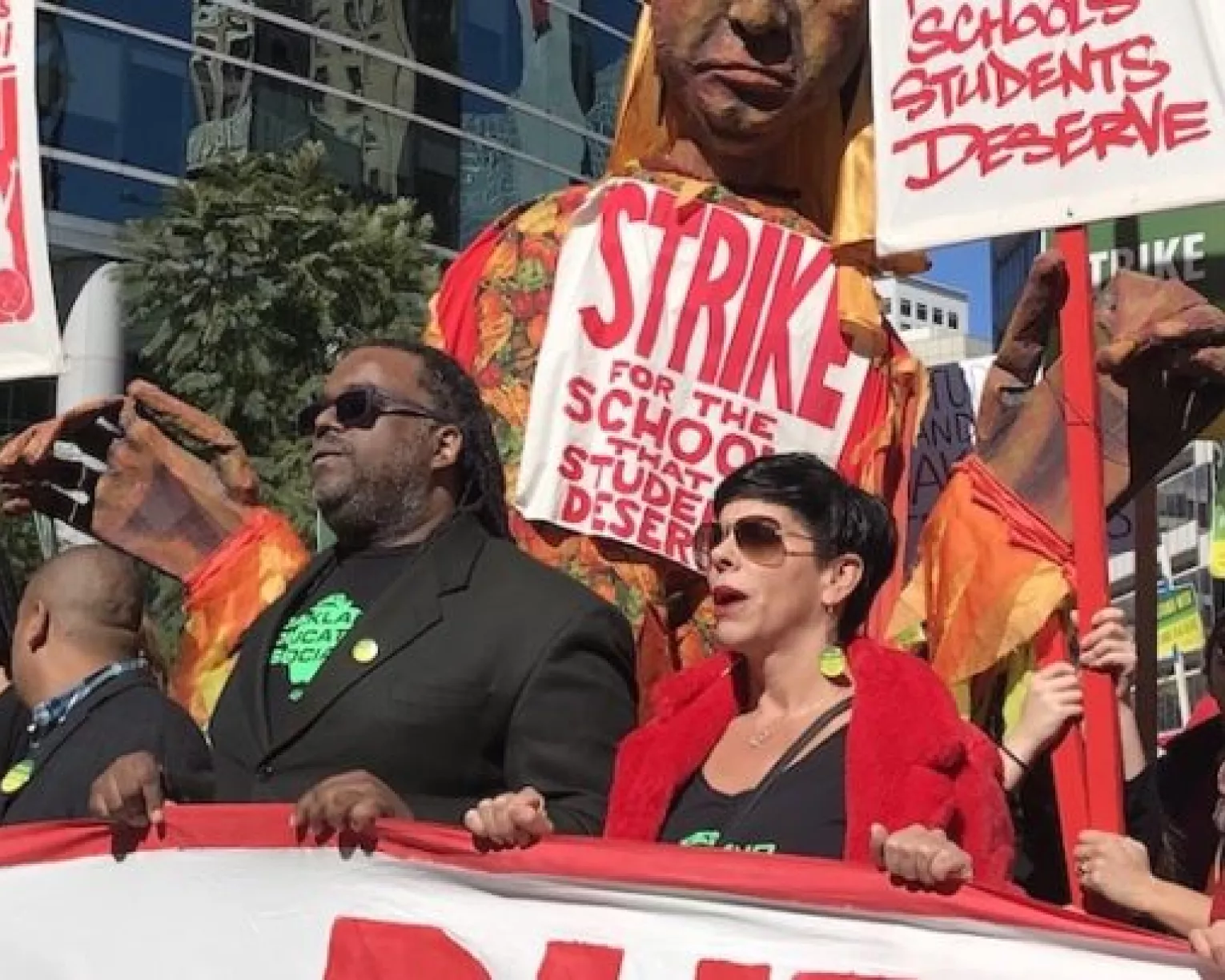Key Takeaways
- Students and teachers at Donna Independent School District (Texas) were told to return in August for the 2020-2021 academic year, causing a whirl of emotions and questions.
- Some ESPs are nervous because health experts warn that the U.S. lacks the testing and tracing capabilities for a safe reopening of businesses.
Linda Estrada, a school secretary at Runn Elementary School in Donna, Texas, has been receiving texts day and night from education support professionals (ESP) across the Donna Independent School District asking about the requirement to report back to work this month. “What if I feel unsafe?” “What about my kids at home?” “What if I’m in a high risk group?”
“There are a lot of ‘what ifs’ and a lot of anxiety,” says Estrada, an NEA Board member and union activist.
After the governor ended the Shelter in Place order on April 30 and allowed businesses to reopen on May 1, Donna ISD announced it would reopen schools in phases and require all administrators and education support staff to return to their positions to close out the 2019-2020 school year. It includes all job categories, including clerical, technical, custodial and maintenance staff as well as food service and bus drivers who have already been working to feed students and deliver meals. Students and teachers will return in August for the 2020-2021 academic year.
“There are a lot of ‘what ifs’ and a lot of anxiety.” –Linda Estrada, NEA Board member and union activist
The announcement has been met with a whirl of emotions and questions. While some ESPs are eager to get back to work and out of their houses, others are nervous that it’s too soon because health experts warn that the U.S. lacks the testing and tracing capabilities for a safe reopening of businesses. But everyone agrees that if staff must return to school, every safety precaution must be taken.
Unfortunately, says Estrada, there is still uncertainty about that.
“We’ve been asked to disinfect the restroom after we use it but they haven’t even supplied us with disinfectant,” she says. “I have my own, and I know I’ll do a thorough job, but what about the person before me?”
The reopening of schools for staff and asking employees to return to their jobs during a pandemic is revealing a wide divergence in the public’s response to the risks. In some parts of Texas, shops and businesses are shuttered, while in neighboring towns streets and sidewalks are bustling. Estrada knows her coworkers have mostly been sheltering in place and heeding the warnings of the medical community, but she’s seen some posts on Facebook about trips to the lake or the beach and dinners out at Chili’s and other restaurants.
“That’s the concern. They could be around people who are infected and don’t know it, and then they’re bringing it into work,” she says.
CONFUSION AND MIXED MESSAGES
When staff started reporting back to school last week, they were met at the door by the school nurse who took their temperature but wasn’t able to provide masks. If staff arrived without one, they entered the building without PPE to the alarm of their colleagues. The school’s masks and cleaning supplies had been donated to food service workers providing meals during the closure and area health facilities.
As an advocate for the support staff and their safety, Estrada wrote to the health director of the district and received the following response:
“Yes, we are in the process of ordering for the whole school district. We are planning to have PPE in before August. The DISD Reopening Guidelines # 4 state “Facial masks or coverings must be worn while on site” It does not state that the district will provide masks. We will be providing them as a courtesy but until we get them.
As you well know, many medical supplies are hard to find, or they are back ordered because of the unavailability. We are doing the very best to take care of all employees, but as of now we do not have masks to give out.
The few masks and gloves that we did have were all donated to PD and CNS. All employees must help out and self-check themselves and also protect themselves as best as they can.
It is the responsibility of all employees to wear a mask out in public. As they come onto their work site…the same applies.
The Donna ISD superintendent’s office has since assured Estrada that PPE will in fact be provided and that the health director had been misinformed about the supplies.
There is no question that safety is the top goal of everyone, from the superintendent to the school building staff, but confusion and mixed messages reveal the challenges of reopening buildings too quickly.
“We have had great conversations with the superintendent’s office, and if they’re willing to work with us, then we will be OK as long as everyone is kept safe,” Estrada says. “This is our new normal, and if we work together and trust each other, I know we can do a good job of putting the entire community at ease.”
Learn More







